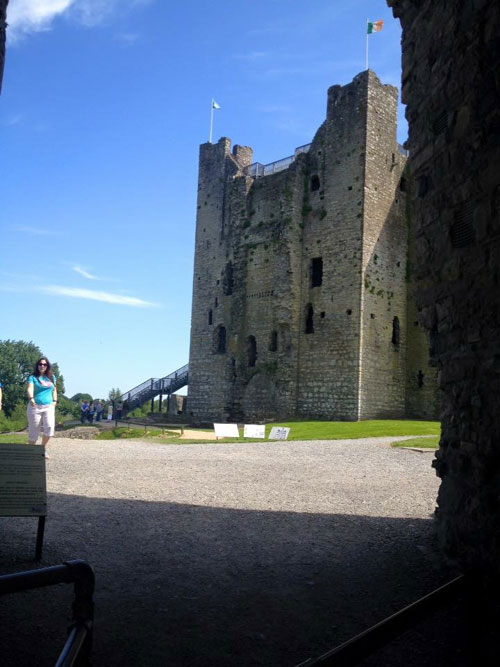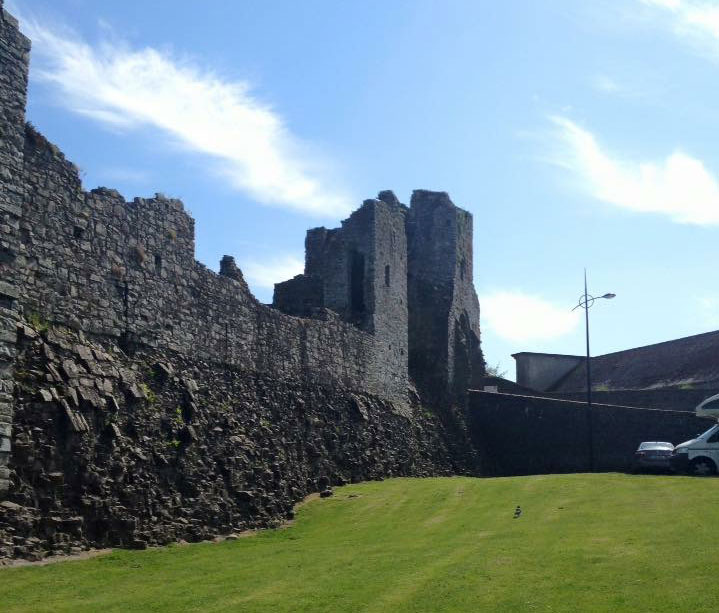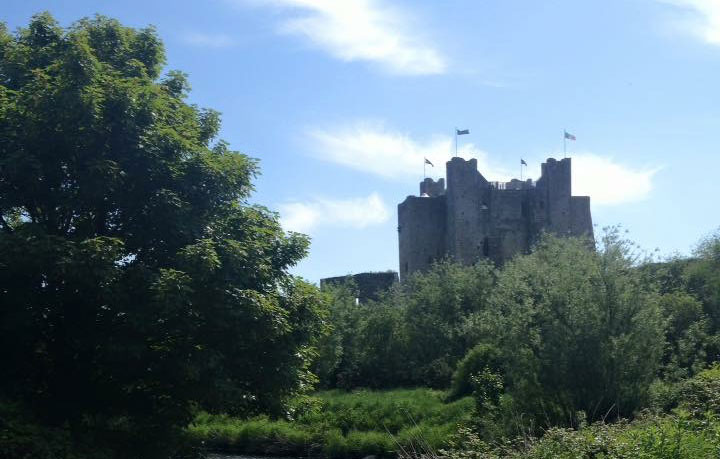Trim Castle is known as Ireland’s largest Anglo-Norman castle, that was erected in the historic Boyne Valley in Trim, County Meath. Taking over 30 years to build it was the home of the Lordship of Meath, Hugh de Lacy, and his son Walter de Lacy.
Opening Hours
November to 14th February: Weekends only 9:00 – 1700
15th February – 31st October: Daily 1000 – 1800
July and August: Daily 1000 – 1800
Closed Christmas and New Years
Last admission 1 hour before closing.
Pricing for Visiting Trim
Adult: €4
Sen/Group: €3
Child/Student: €2
Family: €10
Castle Grounds Only:
Adult: €2
Group & Senior: €1
Child/ Student: €1
Family: €4
Guided tours
Pre-booking for groups is required in advance
Information booklet Available
The tours take approximately 45 minutes
Contact Information for Trim Castle
Address: Trim, Co Meath.
Telephone No: +353 46 943 8619
Email: trimcastle@opw.ie
Website: www.heritageireland.ie
Trim Castle History
Situated on the South of the River Boyne, Trim Castle is now a ruin of it’s former self but is still a dominant feature standing defensively in Trim Village and is the largest Anglo-Norman Castle in Ireland. The keep was commissioned by Hugh De Lacy in 1172 upon being granted the charter and Lordship of Meath by King Henry II of England. Its design and multi phases of construction were overseen by De Lacy and later his son Walter.
Trim is a strategically placed medieval fortress on high ground, placed on a river and close to the Irish Sea. Trim Castle was famously mentioned in the Norman Poem “The Song of Dermot and the Earl” Trim was also placed close to what was considered the centre of Irish power and royalty and a site of religious importance.

Trim started life in true Anglo-Norman style as a large ring work castle with a double palisade and wide ditch and earthwork defensives built to protect the external structure. This phase was destroyed by Ruaidri Ua Carchobair, the then High King of Ireland, this event happen while the Castle was in the care of Hugh Tyrrel. In 1173 Hugh De Lacy rebuilt the castle and his son Walter completed this phase of the castles history in 1224.
Throughout the 14th century the Castle received many improvements such as a new phase of the curtain tower and other features such as an improved Great Hall and Stables. Upon his death Walter De Lacy’s Granddaughter, known as Maud fell into possession of Trim, then upon her death her daughter and until 1425 remained in the hands of the Mortimer family.
During the Medieval Period Trim was the centre of administrative power in Meath and was situated on the Northern boundaries of The Pale, and an important defensive presence. In the 15th century Trim operated as a Mint. During the Confederate Wars Trim fell into the hands of Cromwell’s forces. The Castle had many owners over the next several centuries’and fell into a state of disrepair.
Trim Remanied in the possession of the Dunsary family; In 1993 Lord Dunsary sold the estate to the Irish state. The Irish office of public works preformed exploratory works, excavation, conservation and restoration on the Castle. Trim was reopened to the public in 2000. Trim was put onto the world stage again in 1995 when it famously appeared in the movie Braveheart starring Mel Gibson.
Common Question: What was Trim Castle used for? It was used as an administration centre for the Lordship of meath. The area was created by King Henry 2nd of England. It was chosen because of its prime location elevated about the fording point at the River Boyne. The River Boyne made the castle very accessible from the Irish sea.
Sinead’s thoughts
Having visited some of Ireland’s and Europe’s most formidable Castles in my lifetime, I can say Trim Castle in County Meath holds a special place in my heart. It’s a place I have had the pleasure of visiting many times, it brings back memories of lovely family adventures.
On my most recent visit, I took my time to absorb the magnificent structure, walking around the dominant and formidable Curtain Walls, it’s impossible not be dumb struck at the size and engineering beauty of Trim Castle. This Castle is not just a building of stone that was born in blood during the Norman Conquest of Ireland, Trim is still alive, although now a shadowy memory of its original magnificence.

Trim Castle is still alive, a multi phase living breathing monument that bares the scars of its long life, battle scars preserved in stone. The scars of war, showing advances in the weapons of war, it’s fluid and enduring presence, a living testament to a violent and turbulent past.
It’s easy to see how a town developed in its shadow, it offered protection and a centre for trade, during a harsh era in human history. Imagine as you walk around these battered and scared walls, the sound of horses hoofs with Norman Knights dressed in chain mail brandishing swords. Work your way through the eras of history, the Native Irish and what this Castle must have looked like to them, its dominance over their lands and the fear it must have created and struck into their hearts.
Common Question: Is Trim Castle worth a visit? Most definitely, the Norman invasion shaped Irish history and to witness one of the largest Norman castles established in Ireland is a site to behold. It’s a perfect day out when paired with a visit to Newgrange.
Inside the walls I’m struck by the space and size, with the Keep looming over my head, I can’t help but think of the feasts and councils of war that must have taken place here. This Castle played host to the most powerful Norman’s in the land. The Norman Lords that dined and resided here here, the garrisons that walked these walls. Their memory carved into the stone of Trim Castle.

History comes alive so easily here, this building is inspiring and frightening all at once. Medieval life could be cruel and bloody, this Castle saw it all, it’s a silent witness to Irish History, I found myself wishing that the walls could talk, but as I walked deeper into the bowels of Trim I realised that they do whisper and sometimes scream of it’s dramatic past.

